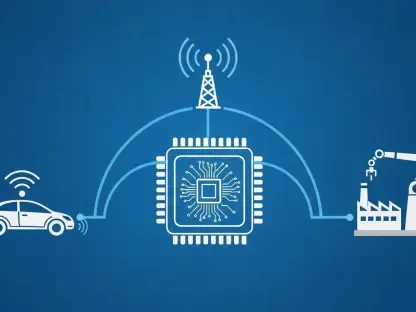Imagine a nation of over 270 million people, spread across thousands of islands, striving to bridge the digital divide and emerge as a powerhouse in artificial intelligence. Indonesia, with its vast and diverse population, faces unique challenges in harnessing technology for equitable growth. Yet, through the establishment of an AI Center of Excellence, the country is taking bold steps toward digital sovereignty, aiming to transform from a mere consumer of global tech to a creator and innovator. This review delves into the core components, performance, and potential of this groundbreaking initiative, exploring how it could redefine Indonesia’s role in the global technology landscape.
Core Features of the AI Ecosystem
Sovereign AI Infrastructure: Building the Foundation
At the heart of Indonesia’s AI ambitions lies the sovereign AI infrastructure, managed by Lintasarta, a subsidiary of Indosat Ooredoo Hutchison (IOH). Often described as an “AI factory,” this setup leverages cutting-edge technology from Nvidia, including Blackwell GPUs and AI Enterprise software. The infrastructure prioritizes secure deployment of AI models, ensuring compliance with local data protection laws while catering to national interests. This marks a significant shift, as it allows Indonesia to control critical digital assets domestically.
Beyond hardware, the integration of cloud partner reference architectures ensures scalability and adaptability for diverse applications. This technical backbone not only supports large-scale AI projects but also fosters an environment where innovation can thrive without compromising security. The focus on sovereignty underscores a strategic intent to reduce reliance on foreign tech ecosystems, a move that could inspire similar efforts in other emerging markets.
Intelligent Security Framework: Safeguarding Digital Assets
Complementing the infrastructure is an advanced security framework powered by Cisco through its Sovereign Security Operations Center Cloud Platform. This system employs AI-driven threat detection to identify and mitigate risks in real time, a critical feature in an era of escalating cyber threats. Localized data control further ensures that sensitive information remains within national borders, aligning with Indonesia’s regulatory priorities.
The emphasis on security is not merely technical but also trust-building. By safeguarding digital assets, the initiative reassures stakeholders—ranging from government bodies to private enterprises—that AI adoption can proceed without jeopardizing privacy or national interests. This robust protection mechanism is a cornerstone of the broader vision to create a reliable and sustainable AI ecosystem.
Performance and Real-World Impact
Sectoral Applications: Driving Practical Solutions
The AI Center of Excellence is already demonstrating tangible impact across multiple sectors, addressing some of Indonesia’s most pressing challenges. In education, healthcare, food security, smart cities, and bureaucratic reform, tailored AI solutions are being developed to enhance efficiency and accessibility. For instance, 28 independent software vendors and startups are utilizing Nvidia-powered infrastructure to craft innovative tools that cater to local needs.
A notable aspect of this deployment is the commitment to inclusivity. By leveraging IOH’s mobile network, the initiative aims to extend AI benefits to both urban centers and remote rural communities over the coming years. This approach ensures that technological advancements do not widen existing disparities but instead promote equitable growth across the archipelago.
Talent Development: Empowering the Workforce
Another critical performance metric is the focus on human capital. The center targets equipping 1 million Indonesians with digital skills in areas like networking, security, and AI within the next few years. Nvidia supports this through its AI Technology Center, offering research assistance, startup mentoring via the Inception Program, and training through the Deep Learning Institute.
Cisco also plays a pivotal role, committing to train 500,000 individuals by the end of the decade through the Cisco Networking Academy. These efforts are designed to prepare a future-ready workforce capable of driving Indonesia’s digital economy. The emphasis on skill-building reflects an understanding that technology alone is insufficient without the talent to wield it effectively.
Challenges in Scaling and Adoption
Technical and Accessibility Barriers
Despite its promising start, the initiative faces significant hurdles in scaling AI infrastructure across a geographically fragmented nation. Ensuring consistent access to high-speed connectivity and advanced computing resources in remote areas remains a daunting task. Technical challenges, such as maintaining and upgrading complex systems, also pose risks to long-term sustainability.
Addressing these barriers requires innovative solutions, including partnerships with local telecom providers and investments in decentralized infrastructure. Without such measures, the risk of creating a digital divide—where only certain regions benefit from AI advancements—could undermine the initiative’s overarching goals of inclusivity.
Regulatory and Ethical Concerns
Equally pressing are the regulatory and ethical dimensions of AI deployment. Balancing rapid technological advancement with data privacy protections is a complex endeavor, especially in a country with diverse cultural and social norms. Questions around accountability and the potential misuse of AI tools linger as critical points of contention.
To mitigate these issues, ongoing collaboration between government, industry, and global tech leaders is essential. Developing clear ethical guidelines and robust policy frameworks will be crucial to ensure that AI serves as a force for good, rather than a source of unintended harm. This aspect remains a work in progress, demanding vigilance and adaptability.
Final Thoughts on Indonesia’s AI Venture
Looking back, the establishment of Indonesia’s AI Center of Excellence stood as a defining moment in the nation’s technological journey. The integration of sovereign infrastructure, fortified security measures, and a strong emphasis on talent development showcased a comprehensive approach to building a self-reliant AI ecosystem. Its early successes in sectoral applications hinted at the transformative potential for both urban and rural communities.
Moving forward, the focus should shift to overcoming scalability challenges through targeted investments in connectivity and localized solutions. Strengthening regulatory frameworks to address ethical dilemmas will also be vital to sustain public trust. Ultimately, by continuing to foster global collaboration while prioritizing national interests, Indonesia can solidify its position as a regional leader in AI innovation, setting an example for other nations navigating the complexities of digital transformation.









